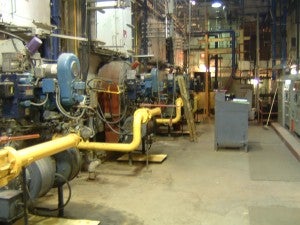 By: Harrison Thomas, 2011 Climate Corps Public Sector Fellow at the New York City Housing Authority, MEM candidate at the Nicholas School of the Environment, Duke University; MBA candidate at Kenan-Flagler Business School, University of North Carolina – Chapel Hill
By: Harrison Thomas, 2011 Climate Corps Public Sector Fellow at the New York City Housing Authority, MEM candidate at the Nicholas School of the Environment, Duke University; MBA candidate at Kenan-Flagler Business School, University of North Carolina – Chapel Hill
If you work with the Energy Department at the New York City Housing Authority, here is what you’ve got on your hands:
- Hundreds of heating systems, all different
- Thousands of buildings, all different
- Hundreds of thousands of tenants, all different
- Millions of energy consuming fixtures
- Hundreds of millions of dollars in annual energy costs, and rising
 In recent years, the housing authority has undertaken many initiatives to directly conserve energy in the 2,600 buildings that house 400,000 New Yorkers. These energy saving initiatives include investments in energy-efficient lighting, instant hot water heaters, refrigerators, and elevators. These capital investments have clear costs and provide clear benefits, but energy expenditures continue to climb by millions of dollars per year.
In recent years, the housing authority has undertaken many initiatives to directly conserve energy in the 2,600 buildings that house 400,000 New Yorkers. These energy saving initiatives include investments in energy-efficient lighting, instant hot water heaters, refrigerators, and elevators. These capital investments have clear costs and provide clear benefits, but energy expenditures continue to climb by millions of dollars per year.
The authority has limited resources and relies on management systems to set priorities to serve tenants and conserve energy. Last week, I went on a field trip to see the capital investments and management systems first hand. The immense scale of investment needed to provide thermal comfort and hot water to tenants was immediately apparent. Each boiler room is incredibly large, complex, and requires full-time monitoring by technicians and supervisors. And the authority doesn’t have just a couple of boiler rooms to manage – it has hundreds that are all different.
For real-time management of the boilers, there is a Computerized Heating Automated System, which allows for remote monitoring and control of each boiler through an internet dashboard. The system produces a lot of information, such as time stamped temperatures, and fuel consumption and operational data. The authority also receives data from other sources, including utilities, weather, infrared imaging, energy assessments, and inspections.
At a certain point, this deluge of data can become misleading, contradictory, or simply too complex to process efficiently. When responding to an inquiry, which sets of data should be used? The answer is not clear cut.
And that’s where I come in. My job is to cut through the flood of data and highlight opportunities for the authority to meet its energy conservation goals.
Lucky for me, an Excel worksheet can handle 1,048,576 rows. Stay tuned.
EDF Climate Corps Public Sector (CCPS) trains graduate students to identify energy efficiency savings in colleges, universities, local governments and houses of worship. The program focuses on partnerships with minority serving institutions and diverse communities. Apply as a CCPS fellow, read our blog posts and follow us on Twitter to get regular updates about this program.









